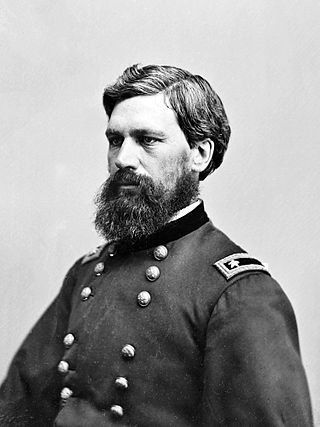
Oliver Otis Howard was a career United States Army officer and a Union general in the Civil War. As a brigade commander in the Army of the Potomac, Howard lost his right arm while leading his men against Confederate forces at the Battle of Fair Oaks/Seven Pines in June 1862, an action which later earned him the Medal of Honor. As a corps commander, he suffered a major defeat at Chancellorsville and his performance was of question at Gettysburg in May and July 1863. However, he recovered from possible career setbacks as a successful corps and later army commander, commanding the Army of the Tennessee from July 27, 1864 until May 19, 1865 leading the army in the battles of Ezra Church, Battle of Jonesborough, Sherman's March to the Sea, and the Carolinas campaign in the Western Theater.
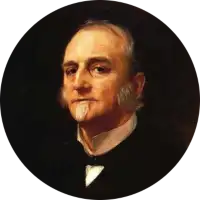
Lucius Fairchild was an American politician, soldier, and diplomat. He served as the tenth Governor of Wisconsin and represented the United States as Minister to Spain under presidents Rutherford B. Hayes and James A. Garfield. He served as a Union Army colonel during the American Civil War and lost an arm at Gettysburg.
The Philadelphia Brigade was a Union Army brigade that served in the American Civil War. It was raised primarily in the city of Philadelphia, Pennsylvania, with the exception of the 106th regiment which contained men from Lycoming and Bradford counties.

Robert Christie Buchanan was an American military officer who served in the Mexican–American War and then was a colonel in the Union Army during the American Civil War. In 1866, he was nominated and confirmed for appointment to the grades of brevet brigadier general and major general in the Regular Army for valor in several battles, to rank from March 13, 1865. In a career that spanned more than forty years, Buchanan held numerous commands and received multiple citations for bravery and distinguished service.
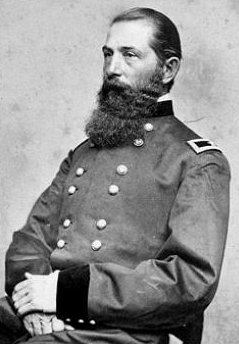
David Allen Russell was a career United States Army officer who served in the Mexican–American War and the American Civil War. He was killed in action as a brigadier general in the Union Army.

Thomas Jefferson Henderson was a U.S. Representative from Illinois and a Union Army officer during the American Civil War.

Milo Smith Hascall was an American soldier, banker, and real estate executive who served as a general in the Union Army during the American Civil War.

George Ashworth Cobham Jr. commanded the 111th Pennsylvania Infantry in the American Civil War and rose to the rank of brigade commander before being killed in battle.
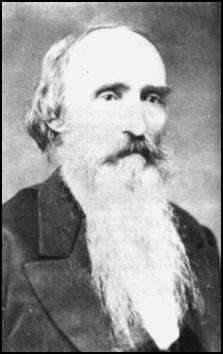
Claudius Wistar Sears was a United States Army officer, an educator, and a Confederate general during the American Civil War.
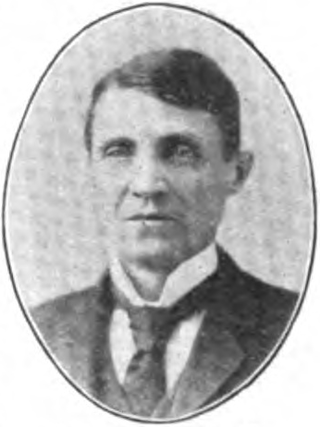
Albert R. Hall was an American farmer, businessman, and Republican politician. He served seven terms in the Minnesota House of Representatives, representing Hennepin County, and was speaker from 1872 until 1874. He later moved to Dunn County, Wisconsin, and served six terms in the Wisconsin State Assembly (1891–1903). In historical documents, his name is sometimes abbreviated as A. R. Hall.

David Ireland was a colonel in the Union Army during the American Civil War. Commanding the 137th New York Volunteer Infantry, he played a key defensive role on Culp's Hill in the Battle of Gettysburg.
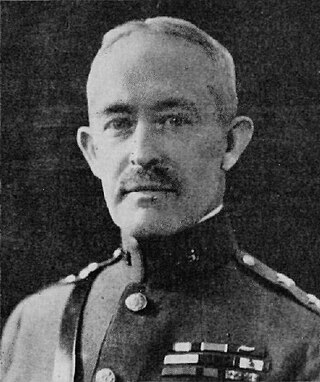
Fred Winchester Sladen was a career United States Army officer who rose to the rank of major general and became Superintendent of the United States Military Academy. He was a son of English-born Joseph A. Sladen (1841-1911) and Martha F. Winchester. The elder Sladen met with Cochise in the company of General Oliver Otis Howard, and was awarded the Medal of Honor for his service in the American Civil War.

Francis Trowbridge Sherman (1825–1905) was a Union general during the American Civil War. He served in the cavalry and infantry, seeing action in both the Western Theater and Eastern Theater.

Ansel Dyer Wass was a Union Army officer during the American Civil War. Wass was born in Addison, Maine on November 12, 1832.
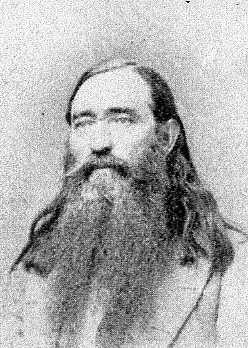
Charles William Adams was a Confederate States Army colonel during the American Civil War. In 1864, he was commander of the Confederate Northern Sub-District of Arkansas, within the Union Army lines. He had the title, although not the formal rank, of "acting brigadier general." He was not officially appointed by Confederate President Jefferson Davis and confirmed by the Confederate States Senate to brigadier general grade, even though some sources identify him as a brigadier general.

Wells S. Jones was an American physician, politician, and soldier. He served as an infantry officer in the Union Army in the Western Theater during the American Civil War, and was breveted a brigadier general near the end of the conflict. After the war, Jones studied to become a doctor at Starling Medical College, precursor to the Ohio State University College of Medicine.
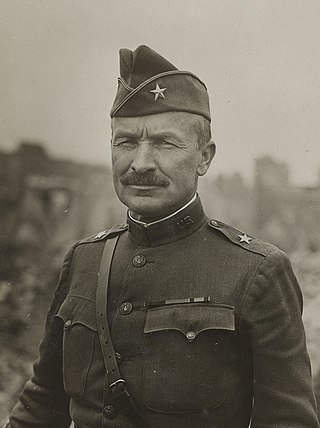
Major General Ulysses Grant McAlexander was an American officer who served in the United States Army. He was heavily decorated for valor, and is one of the iconic fighting men of the American Expeditionary Forces (AEF) during World War I. He is most famous for commanding the 38th Infantry Regiment during the Second Battle of the Marne in July 1918, and earning himself and the regiment the moniker "Rock of the Marne".

Henry Clay Wood was a career officer in the United States Army who attained the rank of brigadier general. A Union Army veteran of the American Civil War, he is most notable for his actions at the Battle of Wilson's Creek, which resulted in award of the Medal of Honor.
The Battle of Rome Cross Roads, also known as Battle of Rome Crossroads, Skirmish at Rome Crossroads, or Action at Rome Cross-Roads was part of the Atlanta Campaign of the American Civil War. It was fought in Gordon County, Georgia, a short distance west of Calhoun, Georgia, on May 16, 1864. The battle was a limited engagement between Union Army units of the Army of the Tennessee and Confederate States Army units of the Army of Tennessee in the aftermath of the Battle of Resaca, Georgia.
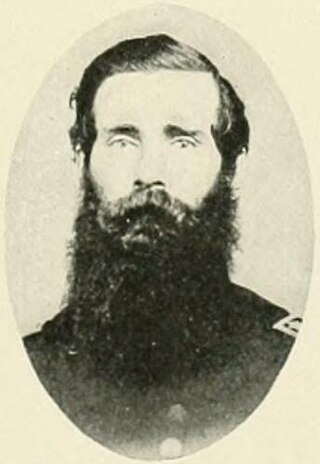
Byron Root Pierce was an American dentist who served as a Union Army general in the American Civil War. He was noted for fighting at First Manassas and during the Peninsula and Seven Days Campaigns. Pierce participated in all of the major battles in the East.



















